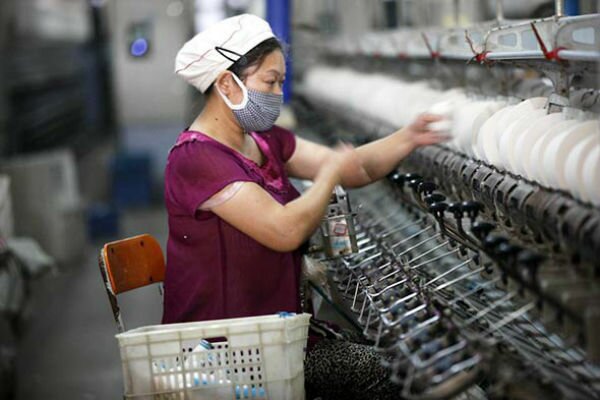
Nowadays, in the 21st century, the clothing industry gains around 7000 billion dollars yearly and during the production, distribution, and sale of clothes, more than 8000 synthetic materials are being used. Unaware, consumers think that synthetic fiber and dyed clothes are safe. Unfortunately, this is not the case.
If you have visited a Chinese clothing store, you’ve probably felt an unusual artificial odor which is released from the numerous chemicals used in clothes made in Chinese and other Asian countries. In the EU and in The States, these chemicals are banned. In the countries of the third world, the regulatives for dangerous substances are very mild. Most of textile and clothes is manufactured in China and then imported in the West.
According to Greenpeace, 20 popular fashion brands use other, detrimental chemicals which don’t only endanger the health of people who buy these clothes, but they also harm the environment. If you ever had a rash that you couldn’t explain, redness, insomnia, or headache, the main culprit may be your T-shirt, skirt, panties, or your linens with Chinese origin.
The more synthetic clothes you wear, the bigger the risk of poisonous chemicals and diseases caused by them. Some of these health problems are dermatitis, lung problems, infertility, and even cancer. Therefore, when you’re buying towels and linens, make sure to read the labels and avoid buying products which contain materials like nylon, acetate, acrylic, triacetate, polyester, and rayon.
Furthermore, you should avoid products which don’t crease, don’t require ironing, or don’t shrink. Wash and dry clothes at least two to three times before you wear them. The skin is the biggest organ and whatever affects it, affects the inside of the body as well. Hence, the toxins which our skin absorbs penetrate into the lymphatic system, the blood, and finally the liver. The skin tries to remove part of the toxins; however, synthetic fiber blocks the skin so the toxins remain blocked underneath.
Clothes full of chemicals can harm the immunity and lead to allergic reactions to formaldehyde which is added to the clothes. Clothes manufactured in China can contain cotton soaked in formaldehyde, artificial toxic colors, phthalates, etc. Manufacturers of clothes in the UK needn’t include the usage of chemicals on the products’ label. What’s more, phthalates, which have been associated with hormonal imbalances, are present in a lot of clothes which have plastic logotypes. If you feel that your new shoes are releasing a plastic odor, they’re probably full of phthalates.
Two years ago, a research on sportswear from three famous manufacturers was conducted. It was proven that all three companies use heavy chemicals. Goalkeeper gloves, footballs, and cleats bought from different places in the world were tested in a laboratory and in one pair of cleats; the amount of toxins was 14 times higher than the limit of the manufacturing company itself.
Dyeing is especially a problem since these colors are toxic, cancerous, and even flammable, and besides being colored, clothes with Chinese origin contain chemicals for resistance to stains, chemicals for reduction of electricity, chemicals against bacteria, unpleasant odors, etc.
Some popular clothing brands have announced that they’re planning to remove dangerous chemicals from their products until 2020. According to researchers, clothes manufactured in China and Southeastern Asia contained between 100 and 500 times more formaldehyde than the allowed amounts.
All in all, you should avoid clothes manufactured in China and opt for clothes which are made of organic cotton, linen, one of the most potent natural fiber, hemp which is naturally-resistant to insects so it doesn’t require fungicides, herbicides, or pesticides during production, silk, a reliable source, however, make sure it’s not processed with synthetic dyes, and organic wool as well.
Source http://www.tophealthylife.com
All content on this Web site, including medical opinion and any other health-related information, is for informational purposes only and should not be considered to be a specific diagnosis or treatment plan for any individual situation. Use of this site and the information contained herein does not create a doctor-patient relationship. Always seek the direct advice of your own doctor in connection with any questions or issues you may have regarding your own health or the health of others.

